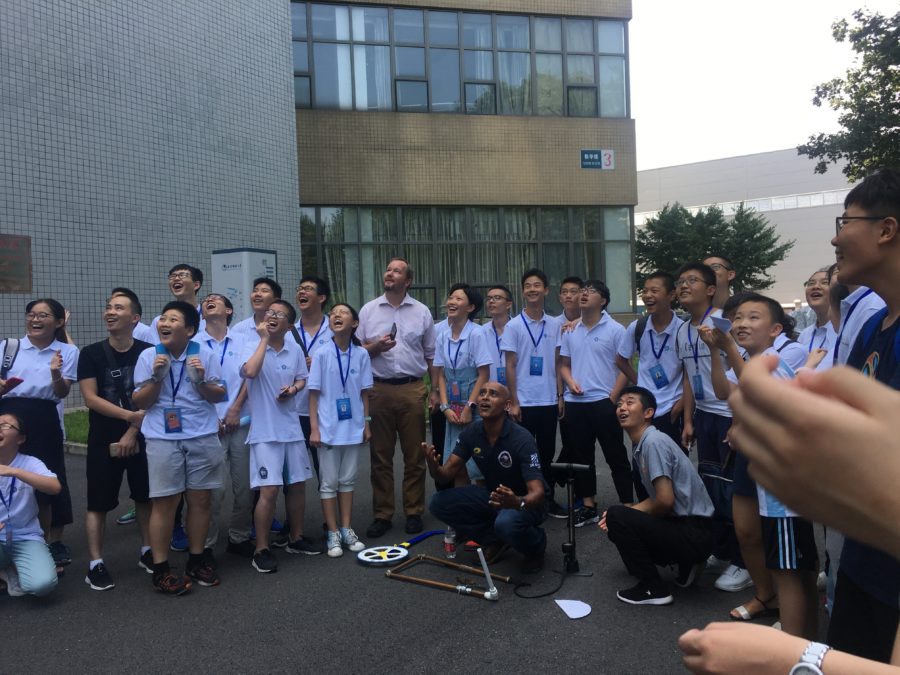It was a pleasure to welcome back the National Space Academy to Beijing last week to undertake further master teaching classes, and in the process showcase a model of education that excites and inspires. My previous blogs have explored the style of teaching, so I do not need to repeat here. Moreover the added bonus of having the NSA in town is the ability to connect quickly with senior officials in China’s space sector given the admiration they have for the NSA’s work.
Since the establishment of the joint centre for space education in September last year, we are now beginning to see momentum in the development of activities and projects. First off was the summer school organised by the Beijing University for Posts and Telecommunications for 20 science teachers and 70 students from across China last week. A major part of this programme involved Space/STEM teaching modules from the National Space Academy. It is always enjoyable seeing the excitement of children (and teachers) designing space science experiments, which are also a fundamental part of physics, chemistry and biology lessons.
A core objective of the recent NSA visit was to road test a programme that we would like to introduce next year in Beijing – a summer school for both British and Chinese school children. An aspiration for that programme is for the kids to visit the Chinese facilities and infrastructure that put people and equipment into space. It would bring together very bright British and Chinese children to connect over a love of science; designing experiments that could be used on board the Chinese Space Station when it comes into operation in 2022.
Next month the University of Leicester will welcome a large delegation of engineering undergraduates from Beihang University in Beijing, who will undertake a bespoke space science training programme. In addition to the good academic links this will generate, the students will also get an insight into one of the UK’s leading universities for space science research. Leicester have a long and impressive record of building instruments that have been used in space every year since 1967, as well as having roles in space missions for a variety of international space agencies. With a bit of luck the students will also enjoy some of the great weather the UK has been experiencing, a welcome escape from the scorching heat of the Beijing summer.
The evolution of the joint centre will be excellent for UK China space science relations. While inspiring school children into science and engineering is a core component, the aims of the centre are much broader than that. Skills and training for under grads, posts docs and general science exchanges are all part of the vision in making this centre a platform for enhanced partnerships, for the benefit of both countries.

